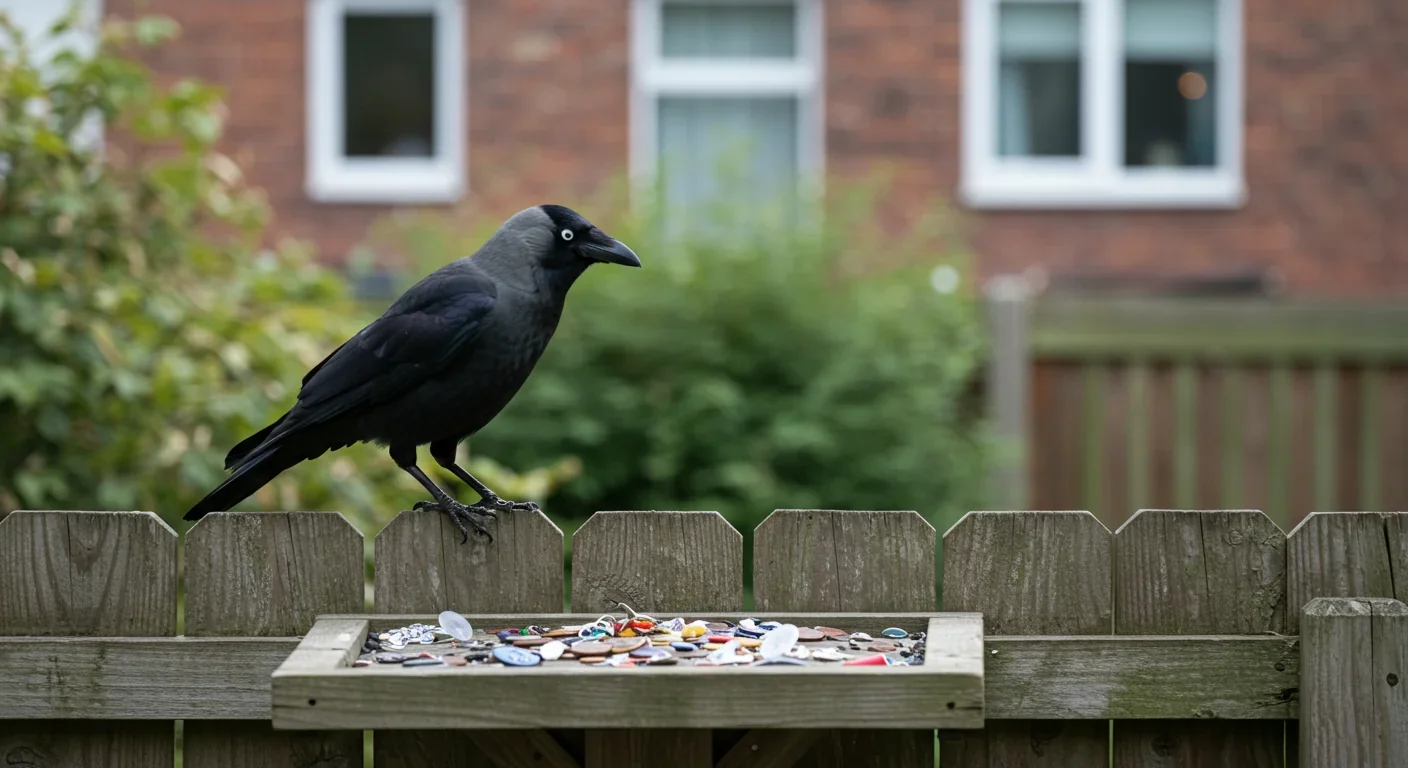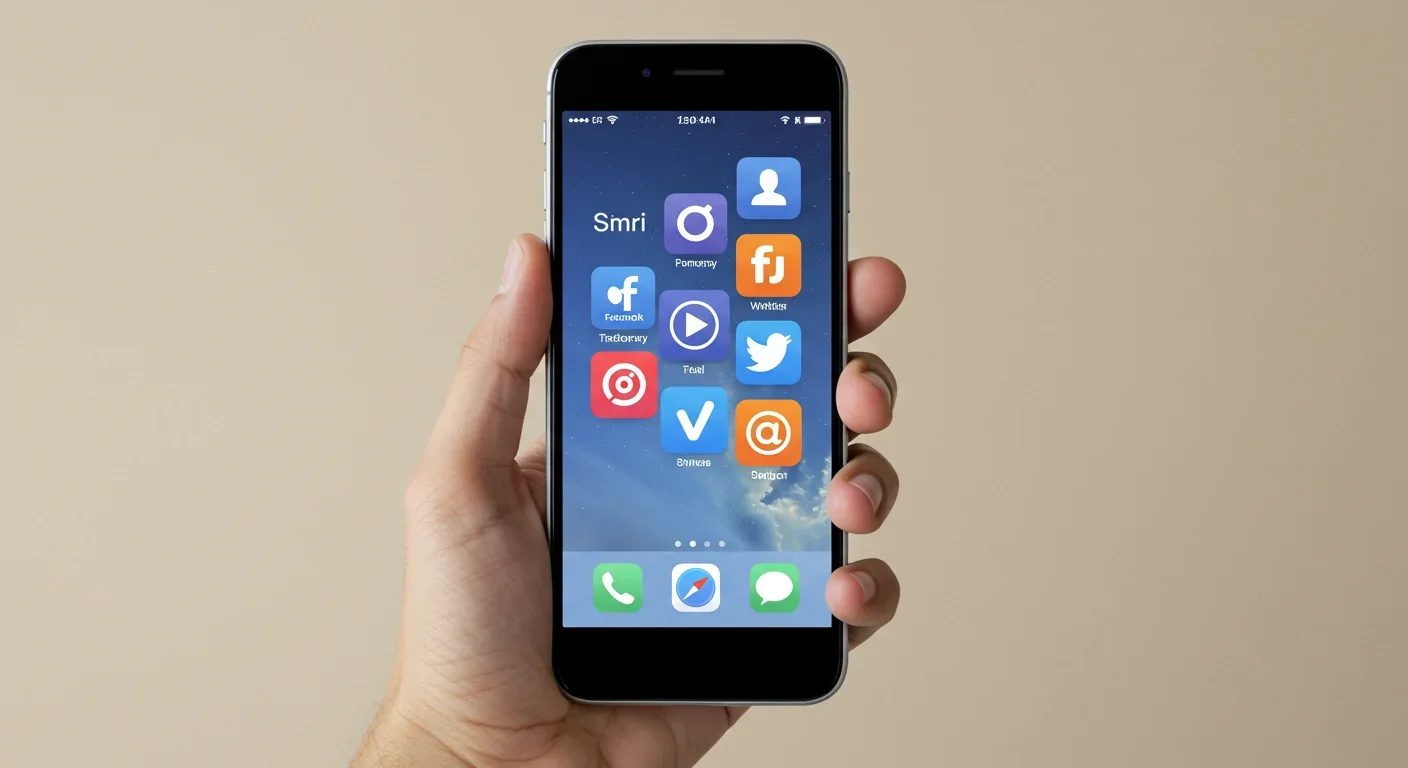The Benjamin Franklin Effect: Win Hearts With Favors

TL;DR: Our attraction to impractical partners stems from evolutionary signals, attachment patterns formed in childhood, and modern status pressures. Understanding these forces helps us make conscious choices aligned with long-term happiness rather than hardwired instincts.

By 2030, economists predict that dating will cost the average American over $150,000 in their lifetime. That's not counting emotional labor, time lost, or opportunities missed. Yet we keep choosing partners who stretch our budgets, drain our energy, and defy practical logic. A growing body of research reveals this isn't just bad luck or poor judgment. It's hardwired into how we're built, shaped by forces that made sense 100,000 years ago but clash spectacularly with modern reality.
Humans didn't evolve to swipe right on fiscally responsible accountants. We evolved on African savannas where choosing a mate meant betting on genetic quality you couldn't directly see. The solution? Costly signals. A peacock's tail is objectively impractical, a massive energy drain that attracts predators. But that's precisely the point. Only a genuinely healthy peacock can afford such extravagance.
Humans do the same thing, just with different feathers. Research from the Frontiers in Psychology journal shows that we're attracted to traits that demonstrate resource abundance because they historically indicated good genes and survival ability. The guy who can afford to waste time on elaborate courtship displays, the woman who maintains flawless appearance despite no obvious practical benefit—these are modern peacock tails.
The catch? What signaled genetic fitness in small hunter-gatherer bands can wreck your life in a globalized economy. That charming partner who's "too creative for regular work" might carry genes for innovation. They'll also probably need you to cover rent.
Evolutionary psychologists call this the mismatch problem. Our mate-selection hardware is running Pleistocene software on a 2025 operating system, and the bugs are showing up as credit card debt and therapy bills.
Here's where things get messier. Humans added a uniquely complicated layer to mate selection that other species don't deal with—we made social status hereditable and transmissible across generations. In most animal species, you can't inherit your parent's dominance rank. Humans invented wealth, titles, and social capital that persist.
This changed the math of partner choice completely. Studies on social status in dating show that we don't just evaluate potential partners on their individual merits. We're calculating how their social network, family connections, and class position will affect our children's prospects for the next 50 years.
The problem is that high-status individuals know their value. They can demand more. Economic research on dating fairness reveals a brutal dynamic—the most "desirable" partners on the mating market often require the highest investment of time, money, and emotional energy. They can because competition for them is fierce.
This creates what economists call adverse selection in the dating market. If you're pursuing someone primarily for their status value, you're probably competing against dozens of other people doing the same calculation. That competition drives up the "price" in terms of gifts, time investment, and relationship maintenance costs.
The data shows this isn't just perception. Modern dating genuinely has become more expensive. Between 1995 and 2023, the average cost of dating before marriage increased by 214% after adjusting for inflation. Part of that is restaurants and entertainment getting pricier. But a bigger part is that status signaling through consumption has intensified.

While evolution shaped what we find attractive and culture determines the status hierarchy, our childhood writes the code for how we actually behave in relationships. Attachment theory explains why some people consistently choose partners who are emotionally unavailable, unreliable, or demanding.
The research is uncomfortably clear. About 50% of adults have insecure attachment styles, anxious, avoidant, or disorganized. These styles develop in childhood based on how consistently caregivers responded to needs. The cruel trick is that insecure attachment makes you more likely to choose costly, impractical partners.
Anxiously attached people are drawn to avoidant partners who trigger their fear of abandonment, creating a cycle of pursuing someone who withdraws. That pursuit is expensive, not just in therapy bills but in constant emotional labor, grand gestures to win affection, and the opportunity cost of time spent chasing validation.
Avoidant individuals often select partners who demand high investment because it confirms their belief that relationships are burdensome. They're unconsciously proving themselves right, but at considerable cost to their wellbeing and finances.
The Gottman Institute's research on attachment styles and relationship success found that insecurely attached individuals are 3.2 times more likely to report spending beyond their means to maintain relationships. The pattern holds across income levels—it's not about how much money you have, it's about the psychological drivers making you spend it.
Here's the hopeful part though. Unlike your genes, attachment styles can change. Therapy works. So does dating a securely attached partner who models healthy behavior. But first you have to recognize the pattern, and that requires the kind of brutal self-honesty most of us avoid until the third breakup.
Low self-esteem might be the most expensive personality trait you can have. Research on mate value discrepancy shows a devastating pattern. People who perceive themselves as less valuable than their partner spend significantly more on "mate retention behaviors," basically paying to keep someone they think is out of their league.
This creates a perverse incentive structure. If you believe you're not good enough, you'll tolerate a partner who treats you as if you're not good enough. You'll work harder, spend more, accept less. The relationship becomes a constant negotiation where you're bidding against your own insecurity.
The data on this is stark. In studies of long-term couples, perceived mate value discrepancy (thinking your partner is more attractive, successful, or desirable than you) predicts relationship satisfaction dropping by an average of 23% over five years. It also predicts increased spending on gifts, experiences, and what researchers delicately call "compensatory investments."
Social comparison makes this worse. Instagram didn't invent insecurity, but it certainly optimized it. When you're constantly exposed to curated highlight reels of others' relationships, your baseline for what's "normal" gets distorted. Research from MDPI on social media's impact on relationships found that heavy social media users reported 40% higher expectations for partner attractiveness, wealth, and romantic gestures.
Those inflated expectations have real costs. If you believe a "normal" relationship includes weekly fancy dinners, surprise trips, and constant grand gestures because that's what you see online, you'll either spend yourself into debt providing them or feel like a failure for not measuring up.
Let's talk about what researchers carefully call "differential relationship investment requirements," or as normal people say, high-maintenance partners. The psychology here is more nuanced than stereotypes suggest.
Studies on high-maintenance relationship behaviors identify specific patterns. Constant need for reassurance, elaborate gift expectations, emotional volatility that requires management, rigid standards for time investment. These behaviors aren't character flaws—they're usually coping mechanisms for insecurity or past trauma.
But here's the economic reality. A high-maintenance partner requires high maintenance costs. Time is money, and emotional labor is real labor. Research tracking couples over ten years found that relationships with significantly unequal emotional investment had 2.1 times higher rates of financial stress, even when both partners had similar incomes.
The trap is that high-maintenance behaviors often correlate with traits we find attractive. Confidence (which can shade into demanding), passion (which can become emotional intensity), high standards (which can turn into rigid expectations). In the early stages of dating, these traits are exciting. Two years in, they're exhausting.
What makes this particularly costly is the sunk cost fallacy. Once you've invested heavily in a high-maintenance partner, breaking up feels like admitting you wasted all that time and money. So you invest more, trying to make it work. Behavioral economists call this "throwing good money after bad." Therapists call it a very common reason people stay in unsatisfying relationships for years.

Financial expectations in relationships have shifted dramatically. A generation ago, the assumption was simple—men paid for dates, women managed households. That system was unfair and limiting, but it was at least clear. Modern relationships operate in a confusing hybrid space where nobody quite knows the rules.
Research on financial expectations in dating reveals massive generational and individual variation. Some people expect equal splitting from date one. Others expect traditional gender roles. Many expect different arrangements at different relationship stages. The confusion itself becomes costly because mismatched expectations lead to conflict.
Studies show that couples who don't discuss money expectations before moving in together have four times higher rates of financial conflict in the first year. That conflict is expensive, not just in relationship satisfaction but in actual dollars. Joint accounts that weren't properly negotiated, impulse purchases to smooth over money arguments, the cost of maintaining separate living spaces longer because you couldn't agree on finances.
The cost of living crisis has made this worse. When housing, healthcare, and basic expenses consume a larger share of income, there's less buffer for relationship costs. Young adults now spend an average of 34% of their income on dating and relationship maintenance, up from 18% in 2000.
This creates a cruel filter. Practical, financially compatible partners may not trigger the same excitement as someone who feels "out of your league" or emotionally intense. But the exciting choice often comes with a price tag that compounds over years.
Here's what the research consistently shows. The most satisfying long-term relationships aren't with the most attractive, highest-status, or most exciting partners. They're with people whose expectations, attachment style, and values align with yours.
A study tracking 168 couples over 20 years found that initial attraction ratings had almost no correlation with relationship satisfaction after year five. What predicted lasting happiness? Matched expectations about money, similar attachment security, and compatible levels of desired relationship investment.
The couples who were still happy two decades in weren't the ones who started with the most passion or status compatibility. They were the ones who wanted the same things and agreed on what they were willing to pay—emotionally, financially, and in time—to build a shared life.
This doesn't mean settling for someone you're not attracted to. It means being honest about what various traits actually cost to maintain over decades. That charming irresponsibility that seems fun at 25 looks very different at 35 with a mortgage and kids. The emotional intensity that feels like true love often becomes exhausting when you need stability.
The good news is that awareness changes behavior. Research on relationship education shows that people who understand the psychology behind their mate preferences make measurably better choices. Not perfect choices—we're still humans with evolutionary baggage and childhood wounds—but better.
Start by auditing your relationship history for patterns. Are you repeatedly attracted to unavailable people? Partners who require constant validation? People whose lifestyle you can't actually afford to maintain? That's data, not destiny. Recognizing the pattern is the first step to interrupting it.
Second, examine your attachment style. Dozens of validated assessments are available online. If you score as anxious or avoidant, that's not a life sentence, but it is information you should factor into partner choice. Securely attached partners can help you heal. Insecure ones will amplify your patterns.
Third, get brutally honest about financial compatibility before you're emotionally invested. Research shows that couples who discuss money expectations by the third date report 60% less financial conflict over the following year. Yes, it feels unromantic. So does arguing about who should pay for groceries at 11pm on a Tuesday.
Fourth, question social comparison. That couple on Instagram who seems to have perfect date nights every week? They're probably either in debt, miserable, or both. Studies on social media and relationship satisfaction find that high performers on Instagram report below-average actual relationship happiness. The performance is often compensation for the reality.
Fifth, remember that self-esteem is cheaper than trying to buy someone's affection. If you catch yourself thinking "they're too good for me," that's not humility. That's a warning sign you're about to make expensive choices. Work on feeling worthy of good treatment before you commit to someone long-term.
We can't reprogram our evolutionary drives or erase our childhood attachment patterns. But we can run better software on top of that hardware. Think of it as building a conscious algorithm that checks your impulses against reality.
When you feel intense attraction to someone, ask why. Is it genuine compatibility or are they triggering your anxious attachment? Are you attracted to their qualities or their status markers? Do their expectations match what you can sustainably provide, or are you already calculating how to stretch beyond your means?
These questions aren't romantic. They're necessary. Research following people across multiple relationships shows that those who engage in this kind of reflective practice report finding compatible partners an average of 2.3 years faster than those who don't. That's 2.3 fewer years of expensive trial and error.
The goal isn't to eliminate all impractical choices or turn dating into a spreadsheet. Some cost is inherent to relationships—they require time, vulnerability, and investment. The question is whether you're paying for genuine connection or for patterns laid down by evolution, childhood, and Instagram.
The healthiest relationships, according to longitudinal data, are built between people who see each other clearly, accept each other fully, and align on what they're willing to invest. Not the most passionate relationships or the most status-enhancing ones. The most real ones.
Dating is going to keep getting more expensive. Technology will create new ways to compare ourselves to impossible standards. Economic pressure will make financial compatibility more critical. The mismatch between our Pleistocene instincts and modern reality will likely intensify.
But awareness is a form of evolution. Each generation gets slightly better at conscious partner choice because we have more information, better research, and growing cultural permission to question romantic assumptions.
The science is clear. We're attracted to impractical partners for deep-seated evolutionary, psychological, and social reasons. But we're also the only species that can study our own mate preferences, identify the patterns, and choose differently. That ability to override our programming isn't perfect or easy.
It might be the most practical thing we can do for our future happiness. And that future is closer than you think. The choice you make today—to pursue the exciting-but-costly option or the compatible-but-less-dramatic one—compounds over decades. Choose consciously. The person you'll be in 20 years is counting on you to do the math.

Fast Radio Bursts—millisecond flashes from distant galaxies releasing more energy than the Sun in days—have evolved from cosmic oddities into powerful tools. Advanced telescopes like CHIME now detect dozens weekly, tracing origins to specific galaxies and even individual stars. Magnetars, ultra-magnetized neutron stars, are confirmed sources, yet mysteries abound: repeaters in dead galaxies, second-scale periodicities, and absence of X-ray counterparts. FRBs now map invisible baryons, measure...

Scientists are revolutionizing gut health by identifying 'keystone' bacteria—crucial microbes that hold entire microbial ecosystems together. By engineering and reintroducing these missing bacterial linchpins, researchers can transform dysfunctional microbiomes into healthy ones, opening new treatments for diseases from IBS to depression.

Marine permaculture—cultivating kelp forests using wave-powered pumps and floating platforms—could sequester carbon 20 times faster than terrestrial forests while creating millions of jobs, feeding coastal communities, and restoring ocean ecosystems. Despite kelp's $500 billion in annual ecosystem services, fewer than 2% of global kelp forests have high-level protection, and over half have vanished in 50 years. Real-world projects in Japan, Chile, the U.S., and Europe demonstrate economic via...

Our attraction to impractical partners stems from evolutionary signals, attachment patterns formed in childhood, and modern status pressures. Understanding these forces helps us make conscious choices aligned with long-term happiness rather than hardwired instincts.

Crows and other corvids bring gifts to humans who feed them, revealing sophisticated social intelligence comparable to primates. This reciprocal exchange behavior demonstrates theory of mind, facial recognition, and long-term memory.

Cryptocurrency has become a revolutionary tool empowering dissidents in authoritarian states to bypass financial surveillance and asset freezes, while simultaneously enabling sanctioned regimes to evade international pressure through parallel financial systems.

Blockchain-based social networks like Bluesky, Mastodon, and Lens Protocol are growing rapidly, offering user data ownership and censorship resistance. While they won't immediately replace Facebook or Twitter, their 51% annual growth rate and new economic models could force Big Tech to fundamentally change how social media works.